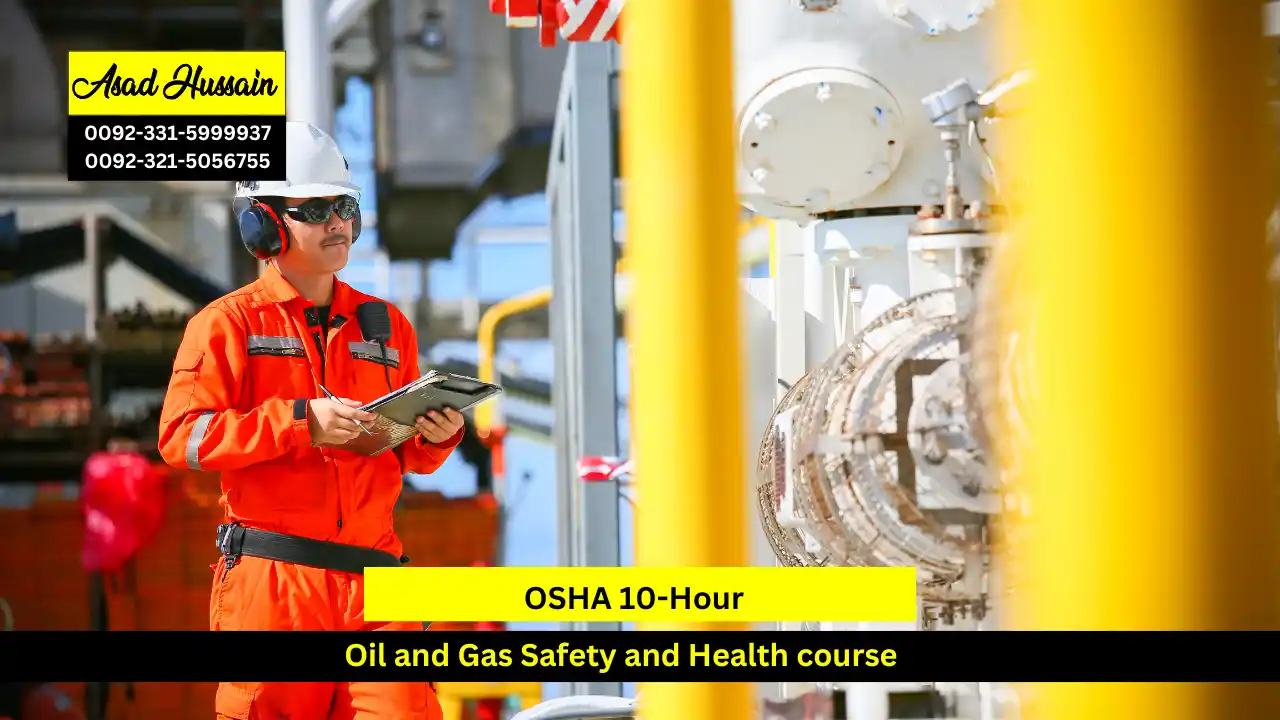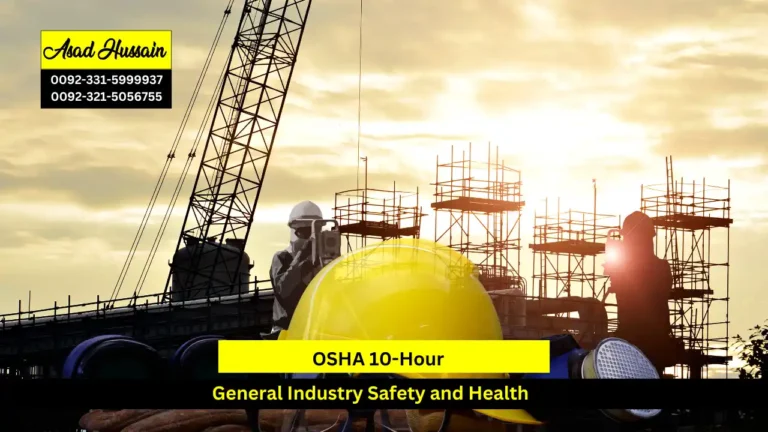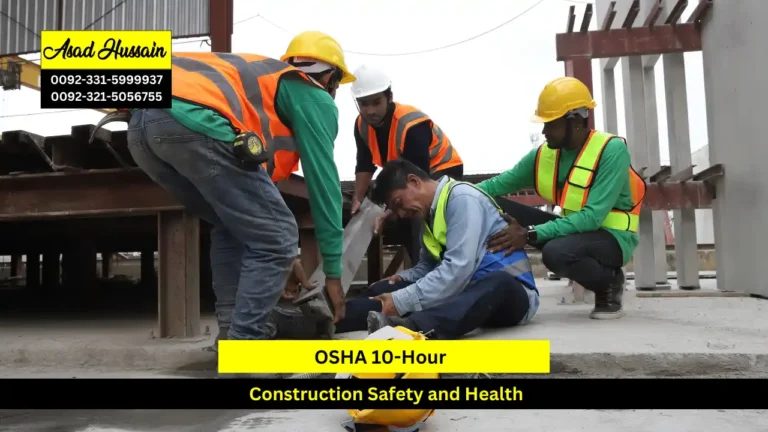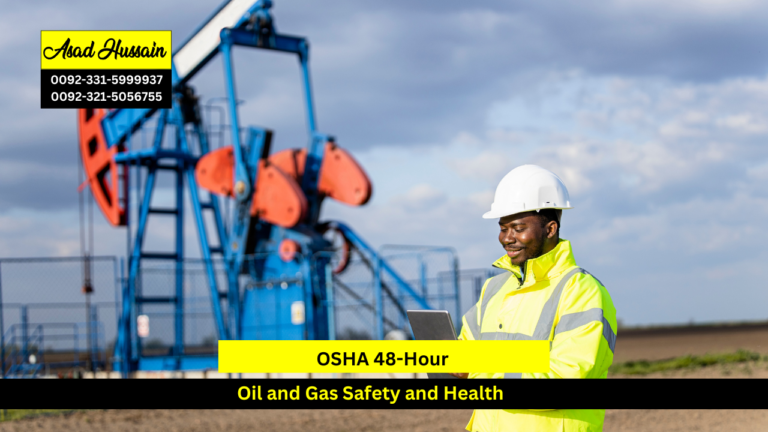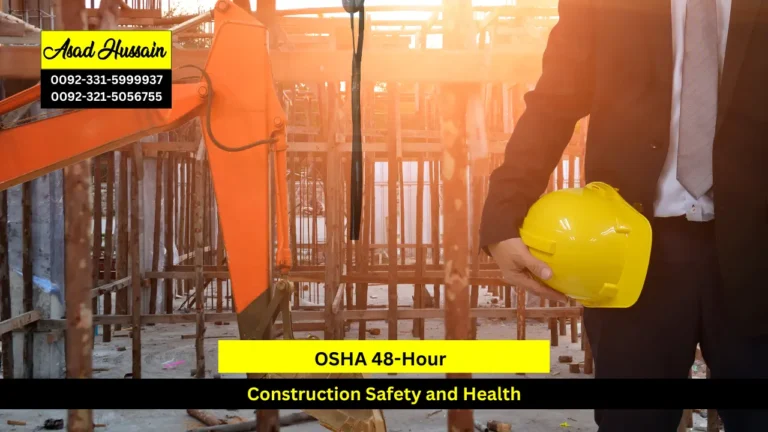In the high-risk environment of the oil and gas industry, maintaining safety and health standards is not just a regulatory requirement but a critical component of operational success. The OSHA 10-Hour Oil and Gas Safety and Health course is designed to provide workers with essential knowledge and practical skills to navigate this demanding field safely. Here’s why this course is indispensable and how it can benefit both employees and employers.
The OSHA 10-Hour Oil and Gas Safety and Health course is a specialized training program developed by the Occupational Safety and Health Administration (OSHA) to address safety and health issues specific to the oil and gas industry. This course covers fundamental safety principles and practices necessary to create a safer working environment and reduce the risk of accidents and injuries on the job.
The OSHA 10-Hour Oil and Gas Safety and Health course is ideal for workers in the oil and gas industry, including safety officers, site managers, maintenance personnel, and any individual involved in operations or safety management. It is particularly beneficial for new employees, those looking to refresh their safety knowledge, or anyone seeking to meet industry-specific safety training requirements.
Enrolling in the OSHA 10-Hour Oil and Gas Safety and Health course is straightforward. You can find available courses through accredited training providers, either online or in-person. Check the course schedule, format, and registration details on the provider’s website or contact their support team for assistance.
The OSHA 10-Hour Oil and Gas Safety and Health course is an essential training program for anyone involved in the oil and gas industry. By providing critical safety knowledge and practical skills, it plays a crucial role in fostering a safer working environment and ensuring compliance with OSHA regulations. Investing in this course not only enhances personal safety but also contributes to the overall success and efficiency of the workplace.
Program Highlights
Mandatory Units
- Introduction to OSHA and the Oil and Gas Industry
- Fall Protection
- Electrical Safety
- Confined Space Entry
- Emergency Action Plans
- Fire and Explosion Hazards
- Personal Protective Equipment (PPE)
- Health Hazards in the Oil and Gas Industry
- Hazard Communication and Chemical Safety
- Control of Hazardous Energy (Lockout/Tagout)
- Basic Literacy and Numeracy: Participants should have basic literacy and numeracy skills to comprehend course materials, including written documents and numerical data related to safety practices.
- Understanding of Oil and Gas Industry: While not always mandatory, having some prior knowledge or experience in the oil and gas industry can be beneficial. This background helps participants relate more effectively to the specific hazards and safety practices discussed during the course.
- Motivation and Commitment: A willingness to engage actively in the training sessions and a commitment to applying the learned safety practices in the workplace are essential for maximizing the benefits of the course.
- No Formal Prerequisites: The OSHA 10-Hour Oil and Gas Safety and Health course does not have formal prerequisites. It is designed to be introductory and suitable for individuals with varying levels of experience in the oil and gas sector.
- Age Requirement: Participants must generally be at least 18 years old, as this is the minimum age for working in most hazardous industries and for attending OSHA training programs.
- Workplace Safety Experience: While not required, prior experience in a safety-sensitive role or a basic understanding of general workplace safety practices can enhance the learning experience and application of the course content.
- Employer Endorsement: Although not always necessary, obtaining endorsement or support from your employer can be advantageous. Employers can provide insight into specific hazards relevant to their operations and may offer additional resources or support for your training.
- Physical and Health Considerations: Ensure that you are in good health and capable of participating in the course activities, which may include practical exercises or simulations related to safety procedures.
Introduction to OSHA and the Oil and Gas Industry
- Understand the role and responsibilities of OSHA in regulating workplace safety.
- Identify key OSHA regulations and standards relevant to the oil and gas industry.
- Explain the importance of OSHA compliance in maintaining a safe working environment in the oil and gas sector.
Fall Protection
- Recognize common fall hazards in the oil and gas industry.
- Apply appropriate fall protection measures and equipment to mitigate fall risks.
- Demonstrate the correct use of fall protection systems, including harnesses and anchor points.
Electrical Safety
- Understand electrical hazards specific to the oil and gas industry.
- Implement safety procedures to prevent electrical accidents.
- Demonstrate the proper use of electrical safety equipment and emergency response actions.
Confined Space Entry
- Identify confined spaces and their associated hazards in the oil and gas industry.
- Apply safe entry procedures and permit systems for confined spaces.
- Use personal protective equipment (PPE) and safety measures to ensure safe entry and work practices.
Emergency Action Plans
- Develop comprehensive emergency action plans tailored to the oil and gas industry.
- Understand the roles and responsibilities during an emergency situation.
- Execute emergency response procedures effectively to ensure the safety of personnel.
Fire and Explosion Hazards
- Identify potential fire and explosion hazards in oil and gas operations.
- Implement control measures to prevent and mitigate fire and explosion risks.
- Apply fire safety practices, including the use of fire extinguishers and emergency evacuation procedures.
Personal Protective Equipment (PPE)
- Select appropriate PPE based on specific hazards encountered in the oil and gas industry.
- Demonstrate the proper use, maintenance, and inspection of PPE.
- Understand the limitations and correct usage of different types of PPE.
Health Hazards in the Oil and Gas Industry
- Recognize common health hazards and their effects on workers in the oil and gas sector.
- Implement strategies to control and reduce exposure to health hazards.
- Promote health and wellness programs to mitigate the impact of health risks.
Hazard Communication and Chemical Safety
- Understand the principles of hazard communication and the use of Safety Data Sheets (SDS).
- Implement chemical safety practices, including labeling, storage, and handling procedures.
- Educate workers on the potential risks associated with chemicals used in the oil and gas industry.
Control of Hazardous Energy (Lockout/Tagout)
- Identify sources of hazardous energy and the risks associated with them.
- Apply lockout/tagout procedures to safely control hazardous energy during maintenance and repair activities.
- Demonstrate the correct application of lockout/tagout devices and protocols to ensure worker safety.
This course is designed for professionals working in the oil and gas industry who are responsible for ensuring workplace safety and compliance with OSHA regulations. It is ideal for safety officers, site managers, maintenance personnel, and anyone involved in operations or emergency response within the sector. Additionally, this course is valuable for those seeking to enhance their knowledge and skills in managing specific hazards associated with oil and gas operations, including electrical safety, fall protection, and confined space entry. By addressing critical safety issues and providing practical solutions, the course equips participants with the tools and expertise needed to maintain a safe working environment and effectively respond to emergencies.

